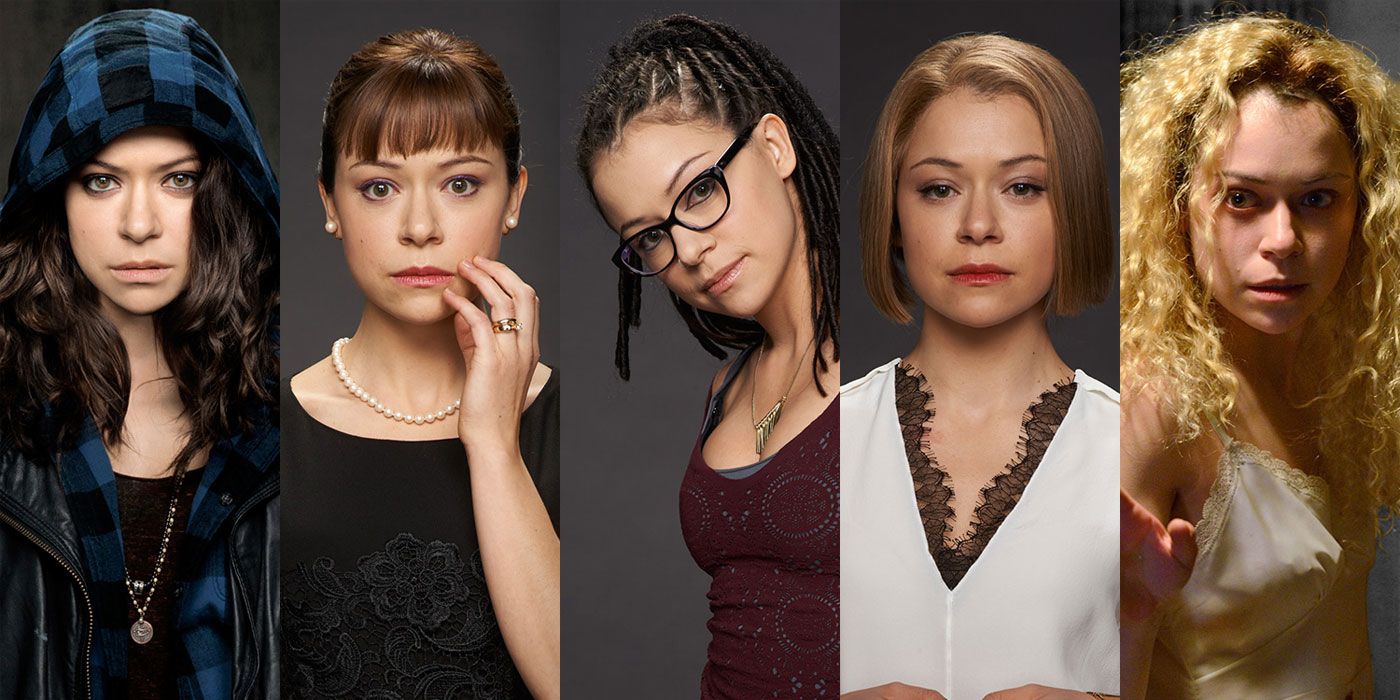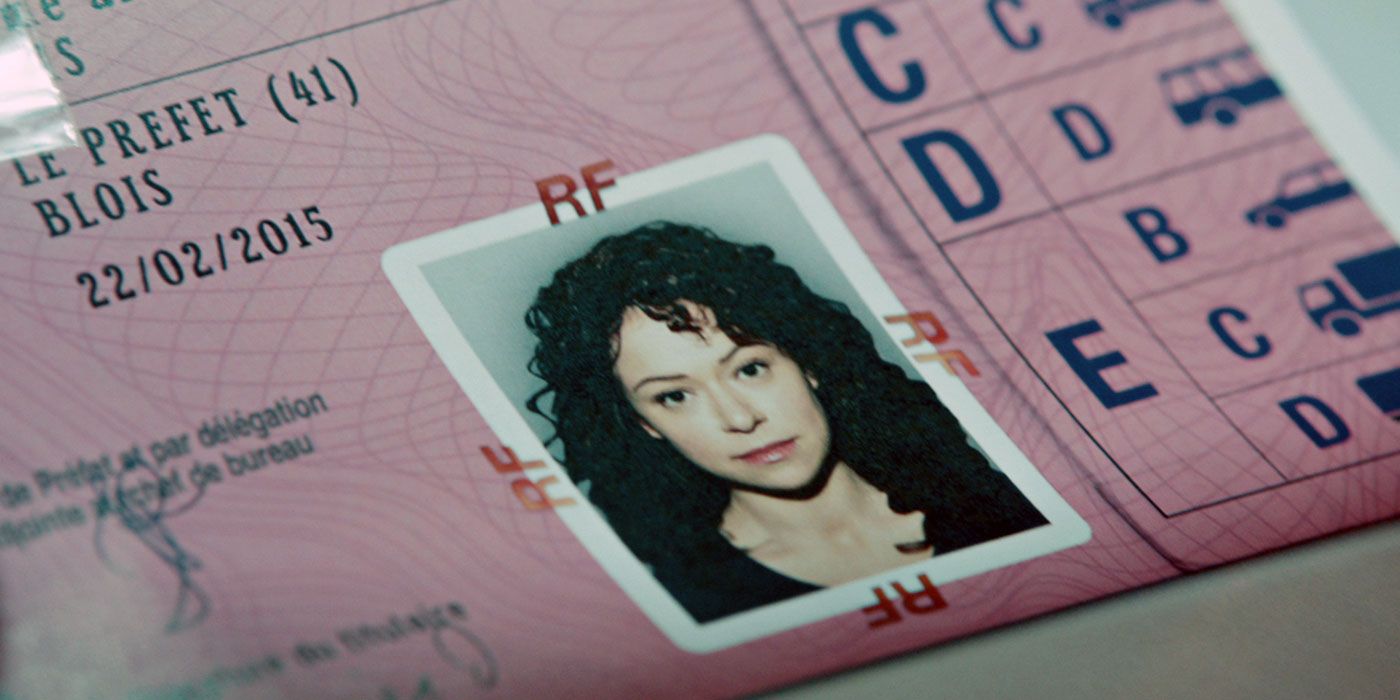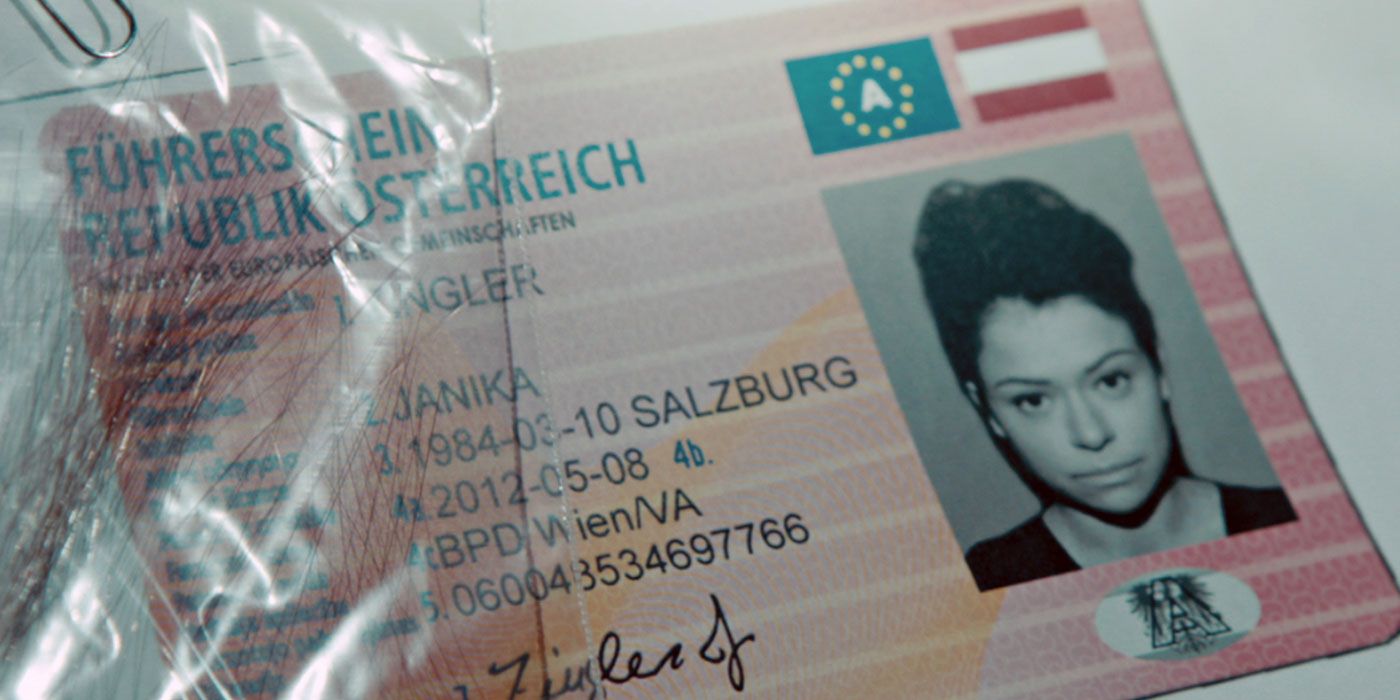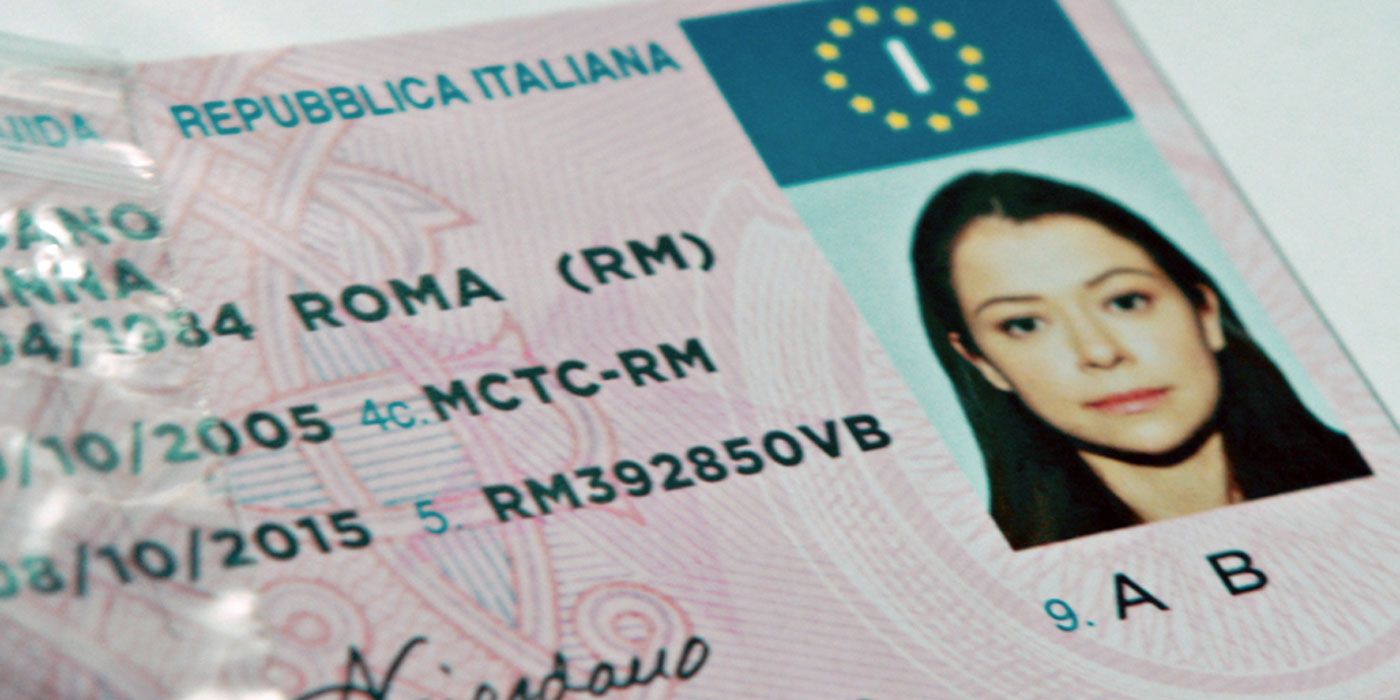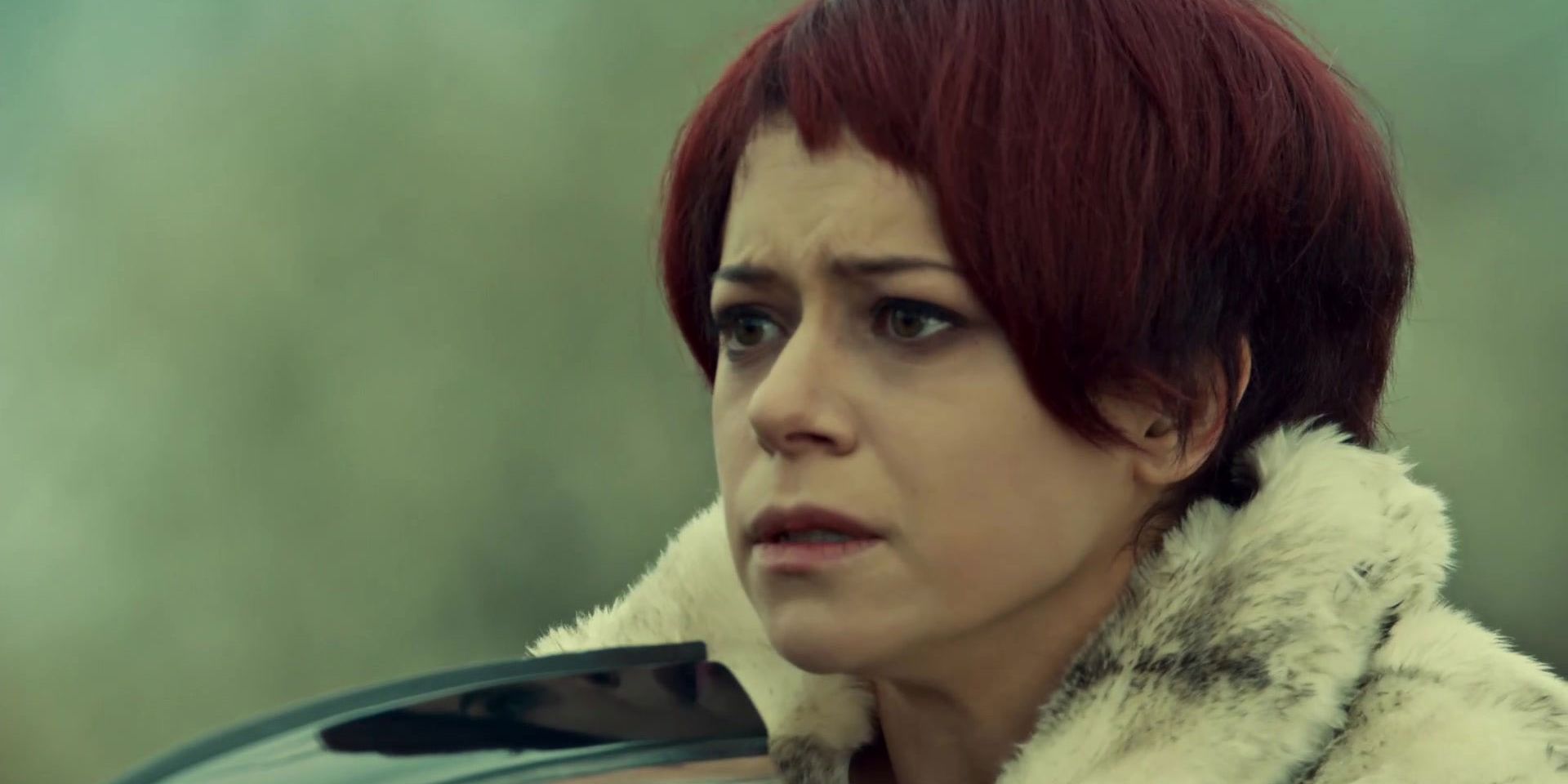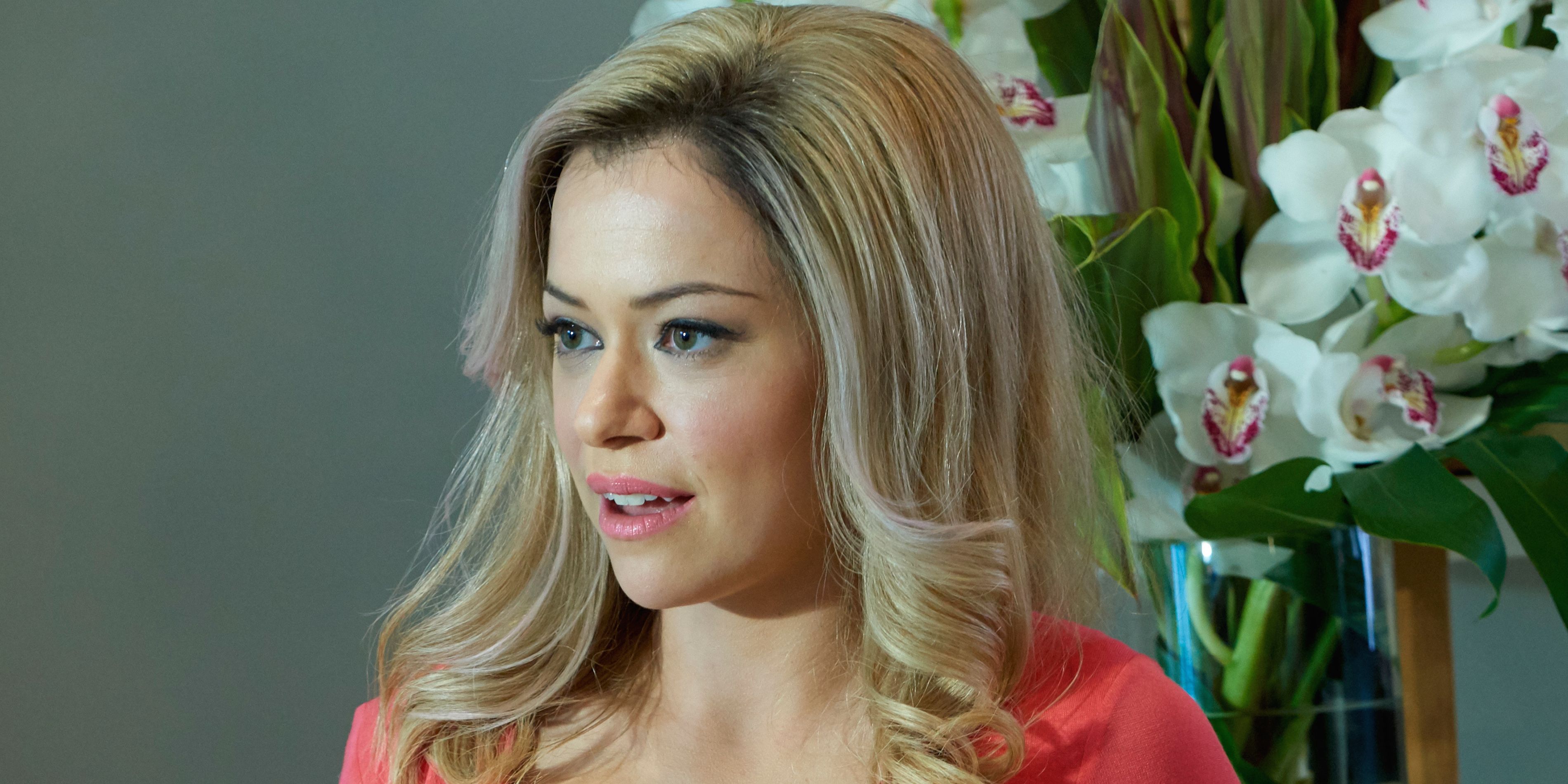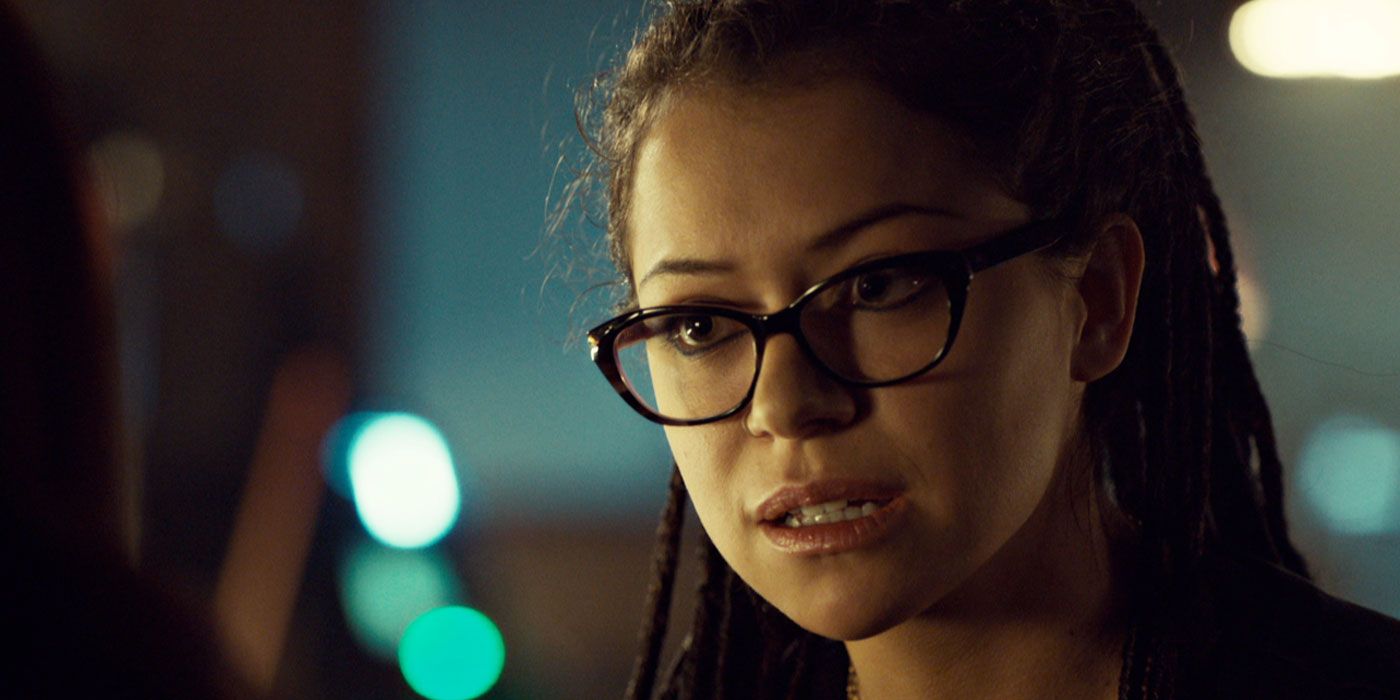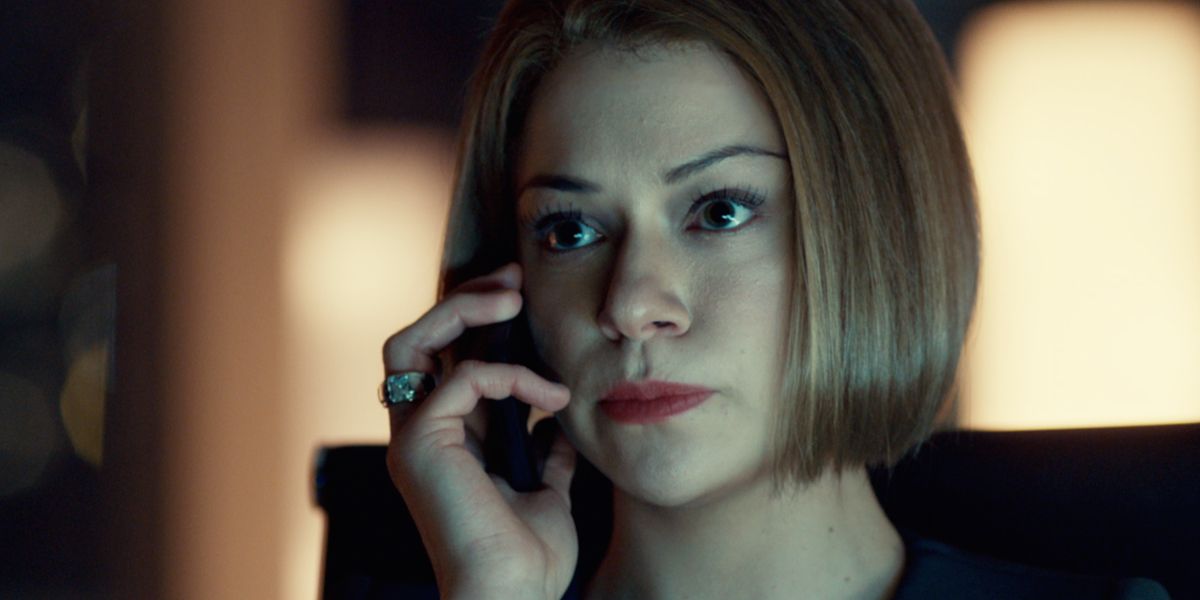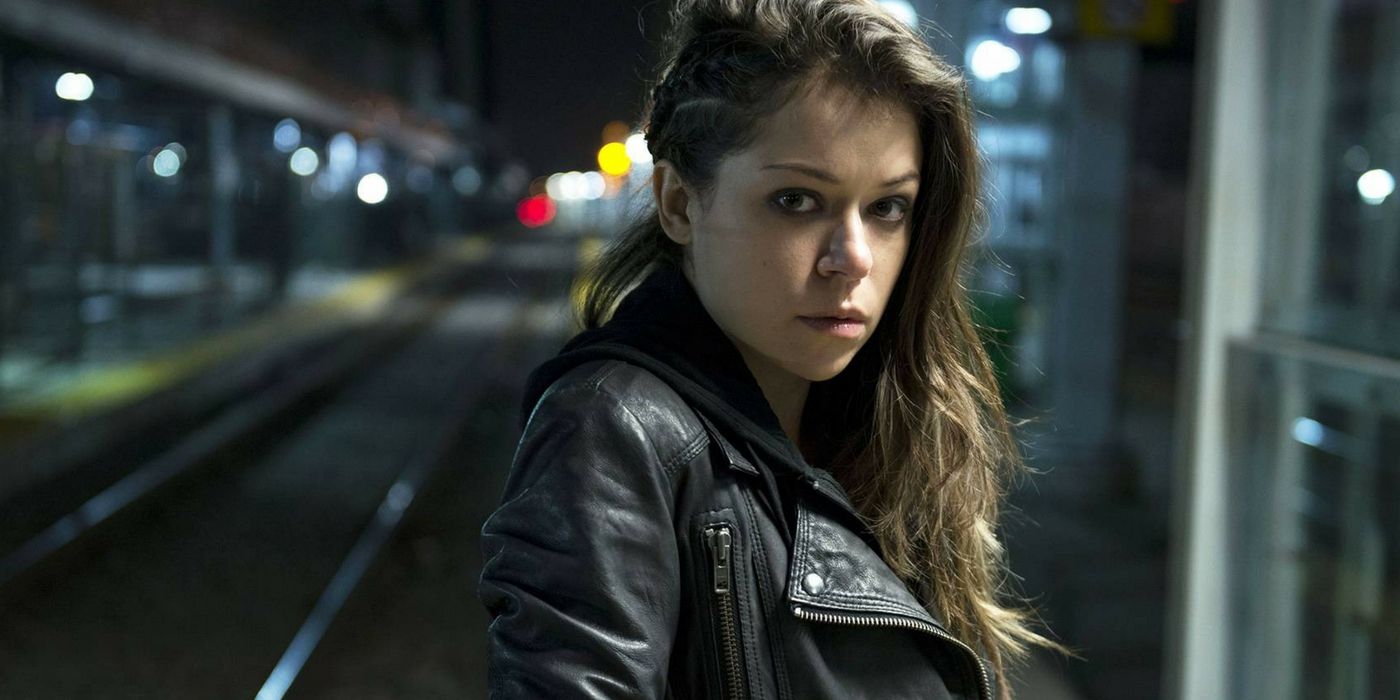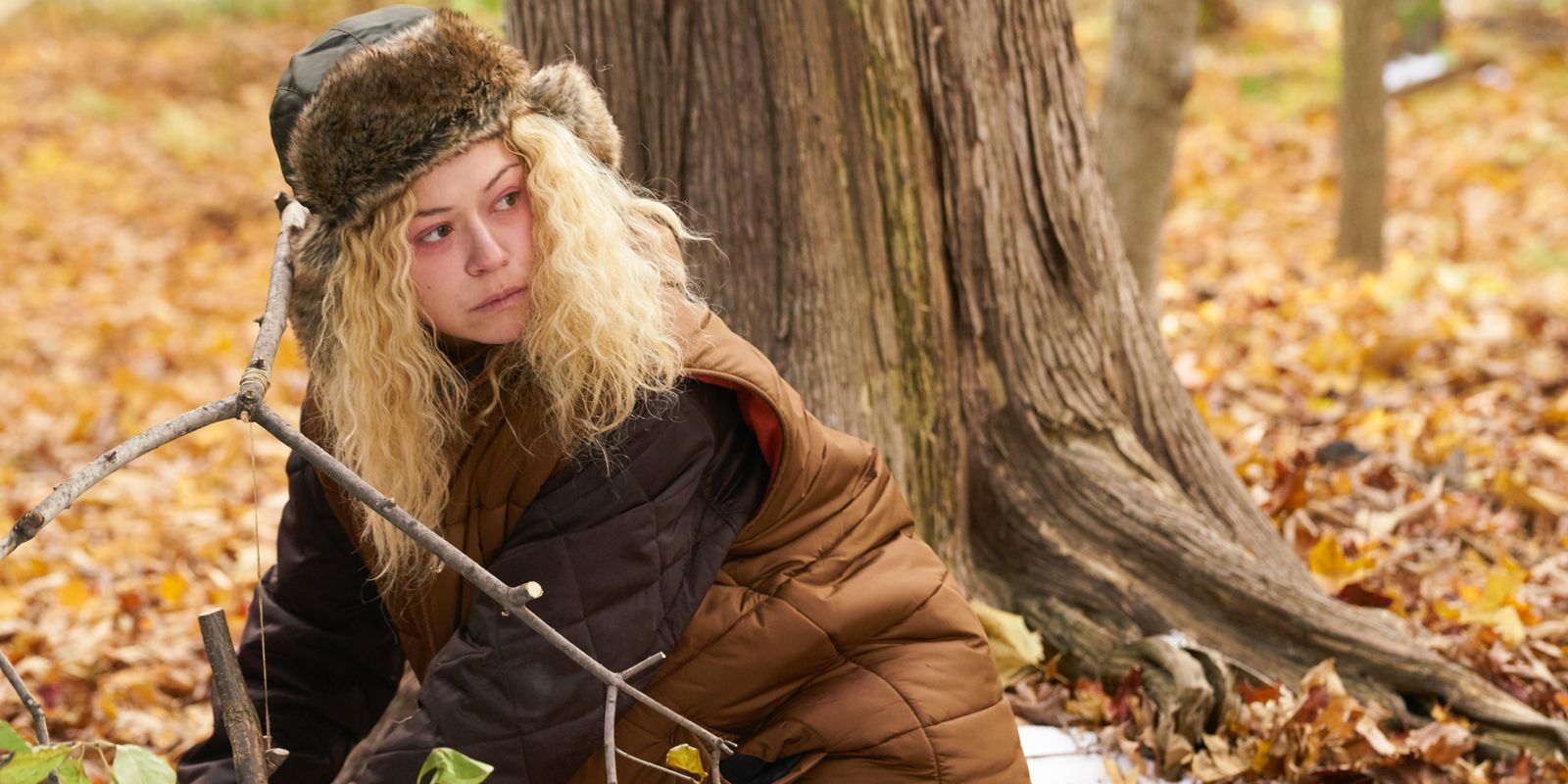Clone Club is about to close up shop. Orphan Black, the science fiction series chronicling the trials and tribulations of a group of clones and the bizarre, mysterious organization that created them, has begun its fifth and final season.
No matter how the series wraps up, Orphan Black’s legacy is likely already defined by a few things. One is that it was a victory for BBC America, finally giving the young network a hit with a devoted cult following that wasn’t Doctor Who or another British export. It will also be remembered fondly for its strong commitment to diversity and inclusiveness, something that is often given short shrift in modern science fiction television.
But the show’s most enduring legacy will almost certainly be the birth of a legitimate star in Tatiana Maslany. A virtual unknown when cast, Maslany has become an Emmy winning powerhouse who is almost certainly bound for much greater fame. The ease with which Maslany has portrayed a small army of different, fully realized characters is simply unrivaled in television history. Watching her work her magic on a weekly basis will be the hardest aspect of the show to say goodbye to. Accordingly, we’ve ranked every Leda clone from the series (let’s just not think about the Castor clones too much).
This is Every Orphan Black Clone, Ranked Worst To Best.
15. Danielle Fournier
Part of the early world building of Orphan Black was the revelation that there were many, many Leda clones that we had never met in any real way and, indeed, never would in any real way. It immediately made the scope of the show, which felt relatively self-contained at the outset, seem positively massive.
A side effect of this development is that there are a few Leda clones that we simply know next to nothing about. Consequently, Danielle Fournier is barely a sketch of a character. She’s only seen in a still photograph, and the fact sheet on her can be summed up pretty easily: she was French and lived in Paris, she was assassinated by fellow Leda clone Helena, and she sported one of Tatiana Maslany’s more hilarious wigs.
14. Janika Zingler
A second Leda clone who died before the events of the series, Janika Zingler is yet another whisper of a character. Very little is known about her besides the fact that she was born in Salzburg, Austria, had a surprisingly grainy looking passport photo, and was killed by Helena. She was such an afterthought they didn’t even bother to give Maslany a silly wig to portray her.
And yet in that one picture, you can still see Maslany trying to differentiate her from the other Leda clones in whatever way she could, give her a vacant look that we can't recall any of the other clones ever sporting. It’s mind boggling to even contemplate this show working in any way without Maslany’s meteoric talent at its center.
13. Aryanna Giordano
It’s entirely possible you’re noticing a theme here. Yet another Leda clone that seemingly perished before the series began at the hands of human wrecking ball Helena, Aryanna Giordano is essentially a nothing character. She was born in Rome, Italy, seemingly had a better passport photographer than either Danielle Fournier or Janika Zingler, and died violently.
Since the show is wrapping up and seemingly more engrossed in its massive Neolution plot than ever before, it’s unlikely that Orphan Black would ever pause long enough to devote an episode to a character like Aryanna Giordano, yet it’s hard not to think dropping in on these long forgotten relics of the show’s early days could have been fertile storytelling ground for more nuanced character pieces. The show has always been better at character work than its giant mythology plotting, so it feels like a minor missed opportunity.
12. Jennifer Fitzsimmons
Jennifer Fitzsimmons is in many ways a testament to the singular, radiant talent that is Tatiana Maslany. A Leda clone seen only via archived videos in a single episode, Jennifer is the starkest example of the illness afflicting many of the clones, most notably Cosima. The videos are presented as a diary the character maintains in an effort to chronicle the progression of her illness.
What could have been played as a relatively straightforward plot device (think something like Wolverine watching the iPhone video of the X-23 program in Logan) is given genuine emotional depth by Maslany’s performance. Maslany is able to summon a fully realized, authentic personality for Jennifer in literally minutes. It’s a character the audience should have no real reason to care about, yet watching her slowly succumb to her illness is surprisingly heartbreaking.
12. Tony Sawicki
Orphan Black is rightly hailed as a show that celebrates diversity and inclusion. The show goes out of its way to celebrate queer characters and to normalize what can be perceived as alternative lifestyles. The romance between Cosima and Delphine is treated just as genuinely as any heterosexual relationship by virtually everyone in the show. It’s one of the show's most unquestionable strengths.
Tony Sawicki was almost certainly created with the best of intentions. A transgender Leda clone is an interesting, complex concept, but the character was styled so cartoonishly that even Tatiana Maslany couldn’t save him.
It was a rare tonal misfire, and it’s highly telling that after a big, splashy debut, the character has, to date, never returned. Only time will tell if Tony is comes back and is redeemed in Orphan Black's final hours.
10. Katja Obinger
Like the other early entries here, Katja is really, at best, just a sketch of a character. A German clone who was in contact with Cosima and Beth, Sarah attempted to contact her when she came into possession of Beth’s phone after her death. When the pair eventually met, Katja very quickly realized Sarah was not Beth. However, before either of them could get the answers they needed, Katja was assassinated by Helena, who shot her in the head.
While not really a fully formed character, Katja was better utilized as an early puzzle piece in Sarah’s chaotic entry into the world of Dyad and Neolution, and her body would fuel some of the early tension in her days masquerading as Beth Childs. In a show not exactly short on them, it was one hell of a wig -- and who can forget Sarah's hilarious impression of her: "Rock und roll!"
9. Charlotte Bowles
Charlotte Bowles is obviously notable for one reason above all: she’s the only character on this list not played by Tatiana Maslany. A Leda clone created 20 years after the others, Charlotte was the only successful attempt at recreating the initial process.
Her origins are never explicitly explained, but she’s the adoptive daughter of Marion Bowles, a high level Dyad operative. She’s later revealed to be a clone specifically of Rachel Duncan, and is suffering from an early onset version of the respiratory disease that plagues many of the other Leda clones.
Charlotte serves as a fascinating mirror for the other clones; a literal younger, more innocent version of themselves, who the Neolutionists wish to exploit for their own malevolent purposes. If the character has a weakness, it’s that the show really hasn’t spent much time exploring her background or expanding on who she is as a character. There’s great storytelling potential in Charlotte, Orphan Black just needs to engage with it.
8. Krystal Goderitch
Poor Krystal. A relatively carefree, seemingly simple-minded manicurist and fitness enthusiast, Krystal finds herself roped into the world of Leda clones and Neolutionists essentially by accident. After a run in with a couple of Castor clones, Krystal’s boyfriend (and monitor) Hector ended up dead. Both Delphine and Felix would end up visiting Krystal, posing as customers, but really intending to extract information from her, while keeping her uninvolved with the show’s larger machinations.
Krystal was ultimately unable to avoid being ensnared by Dyad’s scheming, as she was kidnapped by Rachel’s odious cohort, Dr. Nealon. In one the show’s most nightmarish twists, Krystal was placed in a medically induced coma so that Nealon could switch her out with Rachel and sneak the latter out of Dyad.
Delphine eventually discovers the ruse and frees Krystal, but even her blissful ignorance couldn’t fully erase that horrifying ordeal, and she would find herself drawn more and more to the world of the clones.
7. M.K.
Introduced in season 4, Veera Suominen (M.K. is a nickname based on her genetic code marker) was a dark, mysterious presence. A reclusive clone who was reluctant to trust Sarah, M.K. was eventually revealed to be a close confidant of Beth Childs.
Indeed, M.K. is the one who alerted Beth to the fact that the Neolutionists have agents everywhere, and that anyone she’s close to could be watching her on their behalf. That Beth’s boyfriend, Paul Dierden, turned out to be her monitor was a devastating realization for the character and contributed significantly to her demise.
M.K. is, in some ways, the most traumatized of the clones. Physically scarred from a fire and mentally by a life running from the Neolutionists, she has virtually no friends or allies. Beth’s death deeply wounds her, and while she’s attempted to remotely assist the other clones at times, she’s resistant to the idea of joining the fold in a more concrete way.
6. Beth Childs
The first thing we ever see Beth Childs do is take off her shoes and jump in front of a train, a lightning bolt moment that started Orphan Black with a bang. It’s quite a neat trick for a character to die in the very first scene of a series and continue to shape it so much in death. Indeed, Beth Childs has more than a little in common with Twin Peaks’ Laura Palmer: a seemingly normal woman whose death reveals not only her own demons, but a dark, fantastical plot closing in around her.
Beth’s death was Sarah’s entry point into the world of the clones, and she spent the better part of the first season impersonating her to gather necessary information on Dyad. Beth’s partner, Art, would end up being one of the show’s most crucial supporting players.
Beth’s influence could also be felt in smaller, more personal ways. She taught Alison how to shoot a gun, and Alison was the most shaken by Beth’s suicide. It’s fair to say Beth’s death contributed to Alison’s paranoia and distrust early in the series, which led to some of the show’s most memorable moments.
5. Cosima Niehaus
Cosima Niehaus is, in many ways, the beating heart of Orphan Black. A genius scientist who also happens to be relentlessly level-headed, Cosima is a calming, unifying force among the clones. Her bravery in the face of her escalating illness has been a galvanizing force among the clones, presenting them with real, tangible consequences in their fight against Dyad.
Cosima is also the benefactor of the show’s most beguiling romance. While Alison and Donnie are devoted to each other in deep, sometimes psychotic ways, it’s presented from the outset as an established, lived in relationship. Sarah’s romance with Cal was so underwhelming nobody seemed to notice when he took a season off to defend Daenerys on Game of Thrones. Meanwhile, Cosima and Delphine have the show’s rawest, most intense romantic relationship.
Delphine begins as a morally conflicted researcher at Dyad, but soon finds herself deeply in love with Cosima. The pair endure a seemingly endless run of tragedies and twists, but always find their way back to each other.
4. Rachel Duncan
Rachel Duncan is a Leda clone apart. Raised by Neolutionists, Rachel has been aware that she is a clone her entire life. She willingly works for Dyad and feels nothing even approaching sisterhood for her fellow clones. Indeed, while Helena may have been manipulated into murdering her fellow clones, Rachel coldly and calmly manipulates them for her own purposes.
The show’s most fully realized villain, Rachel is fueled by self-interest and jealousy, always more than happy to terrorize children or exploit innocents to fulfill her agenda. After losing an eye at the hands of Sarah, a severely impaired Rachel spends a season regaining both her physical and mental strength, but gaining essentially nothing in humility or humanity.
The show has rightly set the stage for her villainous curtain call in the final season. There could be no more appropriate antagonist for the show to go out on.
3. Sarah Manning
Sarah Manning is a little underrated. By virtue of being the show’s ostensible lead, Sarah doesn’t always get to indulge in the flights of fancy and bizarre digressions of some of her fellow, more popular clone sisters. Pretty much all of the show’s plot progression and lumbering mythology rests on Sarah’s shoulders, and she handles it remarkably well.
Sarah is also the entry point for nearly every non-Maslany character of consequence, including her foster brother; the lovably silly Felix Dawkins, and her foster mother; the aloof, tougher than nails Siobhan Sadler.
Sarah does occasionally get to have some fun though; she usually gets to carry out the show’s diversions into thriller and suspense tropes, almost always able to outsmart and outmaneuver the considerable enemies in her path. The show simply wouldn’t work without the desperate, determined young mother attempting to protect her daughter from the nefarious, convoluted machinations of Dyad.
2. Helena
No character on Orphan Black has had as dynamic of a character arc as Helena. Originally framed as the show’s big bad, Helena was raised by maniacs to believe that she was "the original" and that it was her duty to kill off the illegitimate clones. While on the warpath, Helena found herself inexplicably fascinated by Sarah, who she would eventually learn was not only her fellow clone, but also her twin sister. This would eventually lead to Helena's long, strange journey toward redemption and acceptance.
After spending a season among a cadre of Promethean weirdos, Helena would eventually reunite with Sarah and become a trusted (if volatile) ally of the other Leda clones. Helena’s prowess with violence and complete lack of even the most basic social etiquette would eventually make her the show’s most reliable source of humor, which is quite the turn for a character who was nothing short of nightmarish early on.
1. Alison Hendrix
On paper, there’s really no reason Alison Hendrix should be the most compelling Leda clone. On a show filled street-smart grifters, super scientists, and assassins, it's hard to imagine that an uptight suburban housewife would be the richest character. And yet Alison is an unquestionably marvel of a character.
At first portrayed as the least trusting of the clones, Alison grew into something of a mother hen to her fellow clones, loving and supportive in both subtle and ridiculous ways. It’s Maslany’s most measured, complicated performance on the show, which is saying something.
Her suburban exploits with her long suffering, endlessly devoted husband Donnie have evolved from mundane bickering with neighbors into drug dealing schemes, rampant paranoia, and straight up murder.
You could make a compelling show out of Alison’s exploits completely divorced from all the science fiction hijinks, which is something that could really only be said about her among the show’s cast.
---
Which Leda clone is your favorite Orphan Black character? Let us know in the comments!

